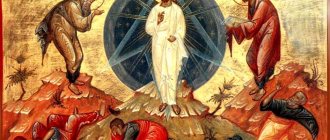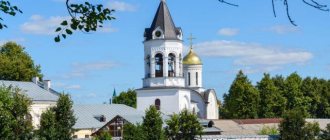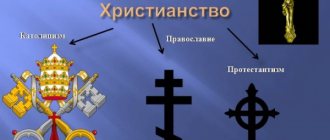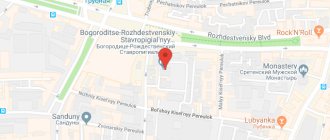In Europe, there has been a Christmas tradition for several centuries to install a nativity scene in or near the house. You can buy parts for this structure, or you can do everything yourself. In this unique setting, the Christmas performance of the birth of the baby Jesus is played out.
Since the action itself belongs to religious folk culture, in Russia this tradition was lost after the revolution. Its revival began in the late 80s along with the renewal of the Russian Orthodox Church.
In the new century, the nativity scene is again popular. It is staged by amateur and professional groups, on the big stage and at home - for friends and family.
What is a nativity scene?
Nativity scene (vrtпъ) translated from Old Church Slavonic means cave. And although the word has many other meanings, as a rule, it refers to the only cave in which Christ was born. The Cave of the Nativity, or Holy Nativity Scene, is located under the pulpit of the Church of the Nativity in Bethlehem. The Savior's birthplace is marked on the floor with a silver star and an inscription in Latin: “Here was born Jesus Christ of the Virgin Mary.” Sixteen lamps glow in a semicircular niche above the star. And a little further away is the chapel of the manger - the place where the Virgin Mary laid Christ after birth. The Manger itself - a feeding trough for domestic animals, which the Virgin Mary used as a cradle, was taken to Rome in the 7th century as a great shrine. And the niche where the manger once stood was lined with marble.
This Nativity scene became the prototype for subsequent nativity scenes created by human art.
Time passed, and from the hands of the craftsmen began to come out carved wooden nativity scenes, made of cardboard and papier-mâché, clay, porcelain, plaster... Refined and simple, large and small panoramas, reproducing the scene of the Birth of the Savior to the world, were a kind of Bible for the illiterate. Some scientists attribute the appearance of such panoramas to Francis of Assisi, who celebrated the holy night in the village of Greccio in 1223. To remind of the holiday, he created a living, as we would say now, installation of a nativity scene (in Italian - “presepe”, “nursery”). Since then, in Italy there has been a tradition of installing presepe in churches and houses of believers. In 2005, an exhibition of Italian presepe was held in Moscow, in the Cathedral of Christ the Savior. Nativity scenes were brought here from all regions of modern Italy. The images of the infant Christ and the Virgin Mary, Joseph, angels, and shepherds in these static compositions often transport the viewer from ancient Judea to modern Italy with its picturesque streets and colorful inhabitants. By the way, in Naples there is a street on which numerous nativity workshops are still located.
In Russia, of course, presepe also took place. In churches to this day, a small tent of fir branches is built over the Nativity icon, often decorated with shiny tinsel. However, more popular (especially in the 18th-19th centuries) were theatrical nativity scenes - short puppet shows with a Christmas plot. Nativity scenes were also called wooden two-story portable boxes-houses, where, in fact, the performance was performed.
But no matter what the nativity scene is - static, mechanical, living - for the viewer it remains a wonderful sign pointing to that very Bethlehem cave.
Nativity scene of V. Novatsky
A wandering nativity scene at a fair
The performance is often staged at various fairs.
In the evening, people stage theatrical performances using the obligatory paraphernalia - dolls and a large star with a lot of rays. They sing theme songs and carols. People can watch a drama that will not leave anyone indifferent. The performance at the fair is divided into several parts - a religious part and a comic part. In some regions of the Russian Federation, Christmas marathons are often held in the park. A large fair is organized so that local residents can attend the Christmas event.
In addition to the Christmas performance (installation of a scene of the birth of Christ from the Bible), at the fair you can buy traditional Russian food products and handmade gifts. It is important to consider that this is a traditional organization scheme.
Important! Rules for conducting rituals: what is engagement?
As part of the Christmas celebrations, folk caroling, performances by folklore groups, thematic master classes, and Sunday school performances are held. The wandering nativity scene appears in manuscripts from the early 18th century. The theater was organized in the form of realizing an avant-garde utopia.
History of the nativity scene
As Boris Goldovsky writes in his “Essay on the History of the Nativity Scene in Russia,” the nativity scene is one of the most mysterious theatrical and aesthetic phenomena that reflected the ideas of world order characteristic of different eras. Even the ancient Hellenes knew something similar. A board was installed on the column, on which scenes were shown, changing when the curtains were closed.
A two-story box, similar to a nativity scene, was described in the 1st century. n. e. mechanic Heron of Alexandria, the dolls in it were mechanical, set in motion using a special handle. The gods were in the upper floor, the Argonauts were in the lower floor.
If we talk about Christmas scenes, then, according to Boris Goldovsky, they appeared much earlier than 1223, around the 5th century, during the time of Pope Sixtus III. The latter reasonably reasoned that the most direct way to the hearts of ordinary people who knew neither ancient Greek nor Latin was a visual illustration of a biblical story. Around that time, voluminous panoramas of the Bethlehem Nativity scene with a baby in a manger and animals bending over him began to appear in churches.
According to some scientists, the nativity scene came to Rus' with the adoption of Christianity and, most likely, was a panorama. Nevertheless, the first reliable information about the existence of nativity scenes dates back to the end of the 16th century. On the territory of the Russian Empire, a nativity box was discovered with the date of manufacture on it being 1591.
Theater "Wandering Den"
By the 17th century, mechanical nativity scenes became popular throughout Europe and, of course, in Russia. Moreover, the Christmas drama was shown not only in secular houses, but also in the houses of priests. And by the end of the 18th century, a dynasty of nativity scene performers had formed in St. Petersburg - the Kolosov family, who for almost a whole century kept the traditions of performing performances.
The heyday of nativity scenes came in the 19th century, when they became popular not only in central Russia, but also in Siberia. True, sometimes local bishops banned nativity scenes, fearing Catholic influence. But since the nativity scene became more of a folk performance, and, as a result, an uncensored, traditional Christmas entertainment, such orders were of little help.
Until the end of the 19th century. The nativity scene wandered through cities and villages, at the same time experiencing “secularization” and turning from a puppet drama with a plot from Sacred History into a secular folk performance. The nativity scene began to consist of two parts: a Christmas mystery and a cheerful musical comedy with local flavor. But by the end of the century, the farcical scenes played on the lower floor turned out to be more significant than the events of the “upper tier.” The nativity scene makers began to carry the wonderful box to fairs, not only on Christmastide, but they went with it right up to Maslenitsa. It is known that some artists even went with nativity scenes to the Nizhny Novgorod Fair. By the way, the “instructor for all Russian trade” opened on July 15!
The October Revolution of 1917 and the anti-religious campaign that followed it decided the fate of Christmas performances. They, like the traditional Christmas tree, were strictly prohibited.
Soon the texts of nativity plays were lost and the secrets of driving dolls were forgotten. Only in 1980, the Folklore Ensemble of Dmitry Pokrovsky devoted its activities to the restoration of the traditional nativity scene. Pokrovsky turned for help to the famous puppet theater researcher, director Viktor Novatsky. The folklorist studied Belarusian, Ukrainian and Russian nativity scenes, carefully examined the nativity boxes in the Sergei Obraztsov Theater and in the Bakhrushin Museum. Collecting bits and pieces, identifying characteristic features, Novatsky restored the text of the performance and “revitalized” the Christmas dolls. His version of the action has become a classic example. Novatsky figured out some of the simple tricks of the nativity scene. For example, how do the Magi kneel before the Child? (As it turned out, the chick from which the sorcerer was made was shorter than the drapery he was wearing.) How does Herod’s head fly off his shoulders when Death cuts it off with a scythe? (Herod’s doll was not made from a single piece of wood. The head was attached to a pin by which the character was led. Pull the pin down a little and the head would be removed!)
Angel. Nativity scene of V. Novatsky
Do you know that…
Prototypes of the nativity scene can be found in antiquity - the ancient Hellenes knew something similar. A board was installed on the column, on which scenes were shown, changing when the curtains were closed.
Angel from an ice den in Yakutia. Photo by Archpriest Sergei Klintsov
A two-story box, similar to a nativity scene, was described in the 1st century by the mechanic Heron of Alexandria; the dolls in it were mechanical, driven by a special handle. The gods were in the upper floor, the Argonauts were in the lower floor.
Rachel. Nativity scene of V. Novatsky
According to researcher Boris Goldovsky, the first stage performances with a Christmas plot appeared in the 5th century, during the time of Pope Sixtus III. The Pontiff wisely reasoned that the most direct way to the hearts of ordinary people who did not know how to read and write was a visual illustration of a biblical story. Around that time, voluminous panoramas of the Bethlehem Nativity scene with the Baby in a manger and animals bending over him began to appear in churches.
Nativity scene of V. Novatsky. Photo by V. Eshtokin
According to some scientists, the nativity scene came to Rus' with the adoption of Christianity and, most likely, was in the form of a panorama. However, the first reliable information about the existence of nativity scenes dates back to the end of the 16th century. On the territory of the Russian Empire, a nativity box was discovered with the indicated date of manufacture - 1591.
Do-it-yourself nativity scene (according to Thomas’s instructions):
How is the nativity scene constructed?
A nativity scene is a two-story box-house with slots for driving dolls, which, according to tradition, is picturesquely decorated on the inside. Dolls are not allowed to move from one floor to another. In the upper tier scenes related to the holy family were played out, and the lower one depicted the palace of King Herod. In the same part, in later times, satirical sketches and comedies were shown. However, the nativity scene is not just a magic box, it is a small model of the universe: the world above (upper floor), below (lower floor), and hell - the hole where Herod falls through.
In winter, the nativity scene was carried on a sleigh, carried from hut to hut, and performances were shown at inns. Benches were placed around the nativity scene and candles were lit. The fairy tale began.
The classic “troupe” of the nativity scene is the Mother of God, Joseph, the Angel, the Shepherd, the three Magi Kings, Herod, Rachel, the Soldier, the Devil, Death and the Sexton, whose duty was to light the candles in the nativity scene before the performance.
A baby in a nativity scene, as a rule, is a tightly twisted flagellum of white matter; The sheep with which the shepherd comes to worship Christ are a curly ball of yarn. As a rule, the characters in the nativity scene are made of wood or rags, from simple, cheap material - easy to make and easy to carry.
However, there was an unwritten rule among nativity scene makers: a doll depicting the Virgin Mary should be made differently than all the others, as if it had been made by another artist. Therefore, the images of the Mother of God and the Savior were created by master nativity scene makers with special care; in them, the latter strictly focused on icons, sometimes placing an icon instead of a doll of the Mother of God.
Theater "Wandering Den"
Work and arrangement of the nativity scene
After the end of the Nativity Fast, the winter holidays begin. These days are full of prognostic signs, rituals, and customs. One of them was a nativity scene.
If you follow established traditions, there are several forms of Christmas performance:
- nativity scene composition - three-dimensional figures of the mystery characters of various sizes, exhibited in the appropriate decoration;
- nativity scene puppet theater is a performance in a specially equipped space (box) with the participation of musicians and singer-storytellers;
- a theater with human actors performing the roles of all or some of the characters.
The static composition “presepe” is still very popular in Europe. But the Russian people have always preferred the puppet show, the Christmas mystery, representing scenes from the Holy Scriptures.
In Rus'
A large box-house with two tiers, inside which the performance was performed, was carried from house to house, and performances were staged at inns and fairs. The nativity scene was installed on a raised platform, spectators took a place on the arranged benches, the sexton lit the candles and the magic began.
The most important thing is that it was not just a wonderful box, it was a model of the universe.
The upper tier, the heavenly world, was the abode of the Holy Family. The lower one - the lower one - showed the palace of King Herod and the events surrounding the birth of Jesus. There was also an entrance to hell, into which the king, defeated by Death, fell.
Under the floor of each tier there was another compartment, closed from the viewer. There were the hands of the nativity scene maker; he held the dolls by special pins and moved them along the slots in the floor. The characters were usually voiced by the puppeteer himself, changing his voice and manner of speaking.
Musicians often took part in the action and performed spiritual chants. The music gave the characters very precise characteristics and filled the performance with celebration.
The traditional cast of characters remained unchanged:
- The Holy Family: the Virgin Mary, Joseph, the baby Jesus lying in a manger, nearby an ox and a donkey, which, according to legend, warmed the newborn with their breath - most often they were a static group and had no words. Instead of figures, sometimes they put an icon of the Nativity.
- The Star of Bethlehem is one of the main characters. It was necessary for her to be noticeable and beautiful. Usually, the star was made through and illuminated from behind with a candle so that it flickered mysteriously.
- The angel who announced the birth of God. In the Orthodox tradition, this was the Archangel Gabriel.
- Shepherds with a flock of sheep. One of them holds a lamb on his shoulders or in his hands as a symbol of the Lamb of God.
- The Magi are a triune character mounted on one pedestal. They come to worship Christ and bring him gifts: gold, incense and myrrh.
- King Herod. In the brightly decorated “palace” in the lower tier, his atrocities in the city of Bethlehem and the punishment that followed were played out.
- Rachel is a woman with a baby who comes to the king with a vain plea not to kill her son.
- Death in black clothes, with a skull instead of a head and with a scythe, with which he cuts off Herod's head.
- Demon. By order of Death, he dragged the villain to hell.
According to religious canons, it was impossible to create an emotional, spectacular, Christmas performance. Acting was not allowed in it. The nativity scenes served only as illustrations of the texts of the Holy Scriptures.
After Christmastide, the spiritual part of the performance was forbidden to be shown, only the secular part remained. Nevertheless, the nativity theater was a favorite entertainment for children and adults, regardless of their income and class.
In modern world
Today, like hundreds of years ago, nativity compositions are arranged in churches before Christmas. European primary schoolchildren perform a Christmas mystery for their parents and friends on the social stage. In Russia, such productions (also by children) are organized by church Sunday schools.
Nativity scene compositions can be very original, for example, with real pets. The first one was organized in 2013 at the Cathedral in Pyatigorsk.
Another national Russian tradition is a cave made of snow. Illuminated from the inside, it looks very mysterious.
Real puppet shows in nativity scenes, according to ancient traditions and canons, are performed by numerous folklore groups.
We can say that in modern Russia, Christmas nativity scenes have become an indispensable attribute of the holiday.
Significance in history
The nativity scene has confirmed its right to life, having traveled more than a thousand years from the times when it served as a kind of Bible for ordinary illiterate people to the present day.
Panoramas illustrating the biblical events of Christmas night truly strengthened faith and placed the birth of Christ among events of exceptional significance for all believers.
And even though the same plot is repeated every year and everyone knows it by heart, the Christmas miracle embodied in nativity scenes gives birth to love and faith.
How does the action take place?
The nativity scene is based on a story telling about the coming of the Savior to earth. An angel announces the birth of God. The Shepherd and three Magi come to worship the newborn Baby, telling about their meeting with Herod, to whom they informed about the birth of the future great King. An angel warns the Magi not to “go to Herod” (he is afraid that the born King will take away his power). An angry Herod commands the Warrior to “beat the babies” in Bethlehem. Rachel comes to Herod, begging him not to kill her child: A voice is heard in Rama, weeping and sobbing, and a great cry; Rachel cries for her children and does not want to be consoled, for they are not there (Jeremiah 31:15 , Matthew 2:18 ). An angel consoles Rachel. Death comes to Herod, he asks her for a reprieve, but Death calls the Devil, and he drags Herod into the underworld.
In the second part of the performance, everyday scenes are shown, then the characters “say goodbye” to the audience.
As Goldovsky writes, the music in both acts of the performance was no less important than the text. She always gave very accurate characterizations to the characters and filled the performance itself with celebration. Particularly popular were cants, which combined folk songs and secular dance melodies.
Rachel. Nativity scene of V. Novatsky
download, print, color and glue.
Victor Novatsky unraveled some of the simple tricks of the nativity scene. For example, how do the Magi kneel before the Baby if they are static dolls? “It turned out that the piece of wood from which the sorcerer was made was shorter than the drapery worn on it. Or here’s another: how does Herod’s head fly off his shoulders when death cuts it off with a scythe? — But the fact is that the Herod doll was not made from a single piece of wood: the head was attached to a pin by which the character was led, and as soon as he pulled it, the head flew away.








